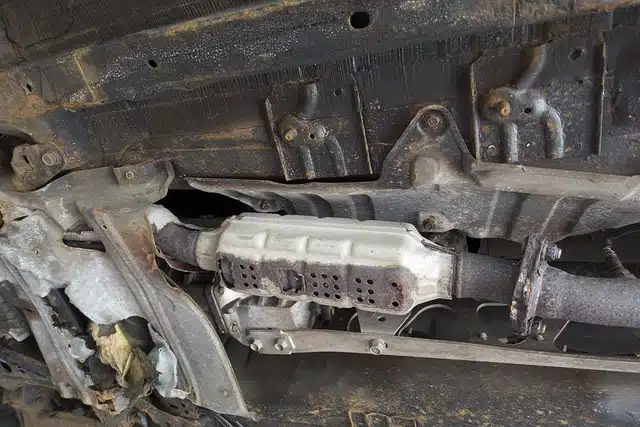
Many combustion engines have a catalyst.
A catalyst is something that allows a catalytic type transformation process to develop. To understand the concept, therefore, we must know what catalysis is. This word, which derives from Greek, refers to the chemical changes that are generated by substances that do not undergo modifications during the course of a reaction .
For chemistry , therefore, a catalyst is a class of substance that, during catalysis, alters the development of a reaction. Catalysts that increase the rate of the reaction are called positive catalysts , while those that cause a decrease in the rate are called negative catalysts .
Catalyst in engines
Catalyst, on the other hand, is the name given to the catalytic converters found in certain combustion engines. These elements have the purpose of controlling the emission of gases that come from an combustion engine.
The catalyst usually consists of a ceramic piece made up of channels that are coated with rhodium or another material. In cars , the catalyst is located in the exhaust pipe area. Thanks to the catalyst, it is possible to reduce the emission of harmful gases such as carbon monoxide by more than seventy percent.

The catalyst allows the gases emitted by a car to be non-harmful.
Decomposition of gases
When these gases come into contact with the catalyst, a chemical reaction occurs that allows the gases to be decomposed and oxidized , making them harmless to humans .
How does the catalyst achieve this benefit? Fundamentally because what it does is transform, through a chemical reaction, hydrocarbons into water and carbon monoxide into carbon dioxide. And all this is thanks to the high temperatures to which the gases are exposed in the aforementioned element that concerns us now.
The thermal screen, the elastic protection, the ceramic structure or the stainless case are fundamental parts of the catalyst that can sometimes suffer breakdowns or break, bringing with it corresponding problems for the car.
Possible problems with the catalyst
If you have doubts that it may not be in optimal conditions, what you should do is check if these situations occur that make it clear that it requires repair or replacement:
• Near the gas exhaust outlet, dense smoke is produced.
• The smell that comes out of the aforementioned vehicle pipe smells very strange.
• Metallic noises are heard under the car.
• The engine does not perform adequately and fails, both during acceleration and when idling.
• There is a notable lack of power.
• Very repeatedly, the car engine stalls.
All of these situations make it clear that the catalyst is clogged, that it is not in good condition or that there has been a breakage in its ceramic part. Hence it is necessary to go to the workshop for an exhaustive analysis.
Beyond vehicles
The use of catalysts is also present in other sectors beyond vehicles.
Currently, research is being carried out in the field of agriculture , the food industry and the production of leather goods to transform carbon dioxide into organic components that can be used in various production processes.
